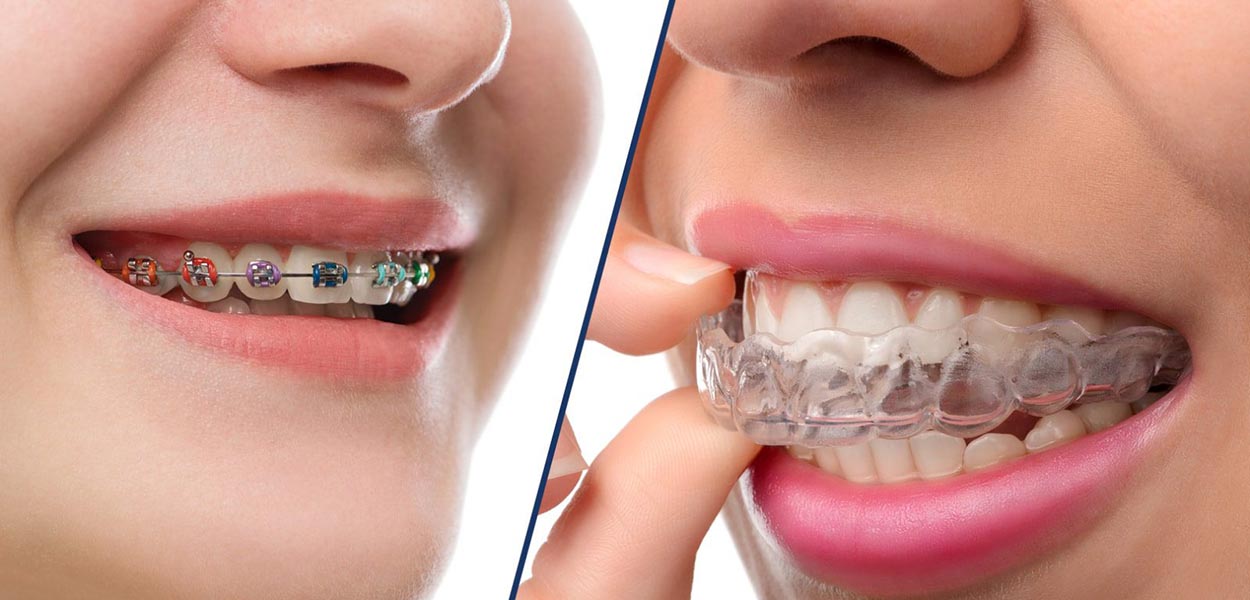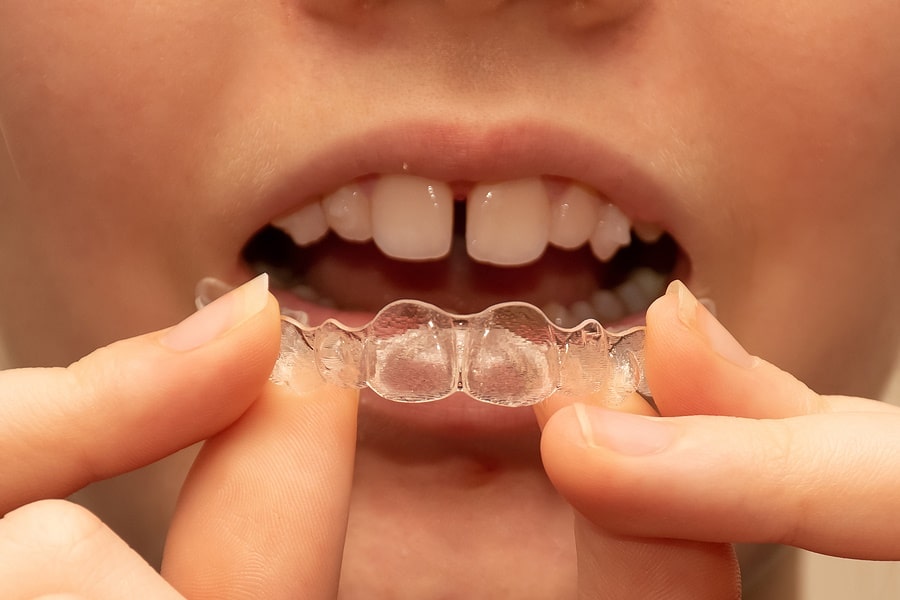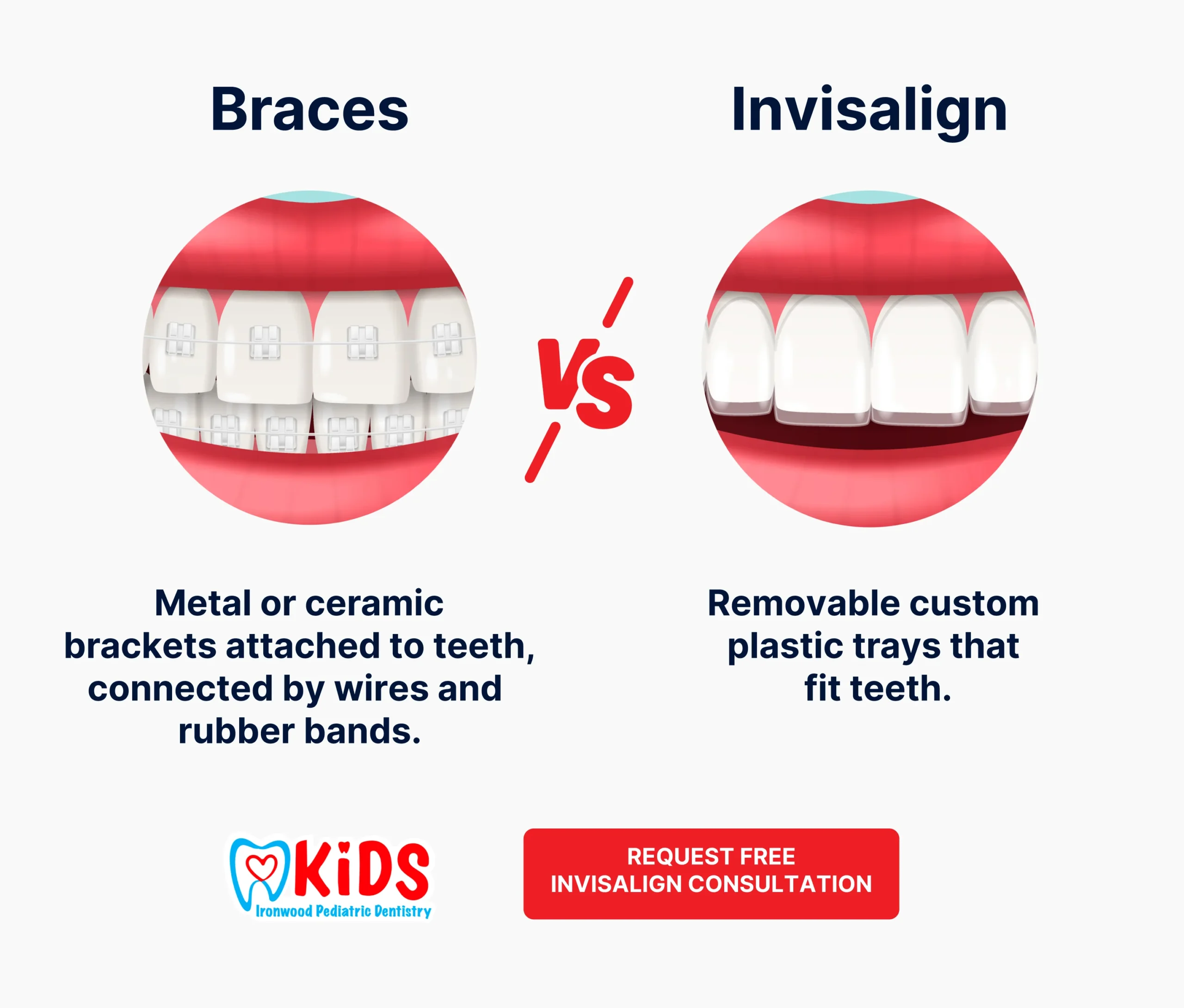The Ultimate Comparison: Invisalign vs. Traditional Braces for Grownups
The Ultimate Comparison: Invisalign vs. Traditional Braces for Grownups
Blog Article
Invisalign vs. Traditional Braces: Which Choice Is Right for You?
When thinking about orthodontic treatment, the choice in between Invisalign and typical dental braces provides several important factors that warrant mindful analysis. Invisalign offers a very discreet choice with detachable aligners, while conventional dental braces give a much more visible yet effective remedy for extreme misalignment.
Summary of Treatment Alternatives

In contrast, traditional dental braces include metal brackets and wires that are bound to the teeth. This technique applies continual stress in time to achieve positioning. While reliable for intricate orthodontic problems, conventional dental braces require routine brows through for modifications and can pose challenges in keeping oral health as a result of the difficulty of cleaning up about brackets and cables.
Both options have their qualities, and the choice typically depends upon details oral conditions, way of living preferences, and patient compliance. Eventually, consulting an orthodontic professional is important for establishing one of the most appropriate therapy strategy customized to specific needs. Recognizing the subtleties of each option can dramatically influence the total success of orthodontic therapy.
Aesthetic Considerations
A substantial aspect affecting the option between Invisalign and typical braces is the visual appeal each treatment uses. Invisalign aligners are crafted from clear plastic, making them basically unnoticeable when put on.
On the other hand, traditional dental braces contain metal brackets and cables, which can be extra noticeable. While advancements in orthodontic modern technology have actually brought about the development of smaller braces and tinted elastics, traditional braces still keep an even more conspicuous profile. For some people, the presence of dental braces might prevent them from seeking required therapy.
Eventually, the selection between Invisalign and typical braces may rest on personal choices relating to aesthetics. Patients that focus on discernment often lean toward Invisalign, while those who are much less worried regarding presence may choose typical braces. Recognizing the aesthetic implications of each option is vital for making an informed decision that straightens with one's lifestyle and preferences.
Comfort and Convenience

In terms of benefit, Invisalign aligners are detachable, making it possible for patients to enjoy their preferred foods without limitation and keep ideal dental health. Cleaning and flossing are streamlined, as the aligners can be taken out during these routines, whereas conventional braces require careful maneuvering around wires and brackets.
In contrast, traditional dental braces require routine adjustments, making them less convenient for those with hectic timetables. Generally, the comfort and ease of Invisalign make it an enticing option for lots of individuals looking for orthodontic therapy.
Treatment Period and Performance
While both Invisalign and typical braces are effective in remedying oral imbalances, the duration of therapy can vary dramatically between both choices. Generally, Invisalign therapy can take anywhere from 12 to 18 months, depending upon the intricacy of the instance. The clear aligners hop over to here function by gradually shifting teeth into their preferred settings, and normal follow-ups with an orthodontist aid ensure progress stays on course.
On the other hand, conventional dental braces frequently call for a longer dedication, typically varying from 18 months to three years. This results from their fixed nature and making use of wires and braces, which can be a lot more effective for intricate instances and severe misalignments (Invisalign). The therapy effectiveness of conventional braces is well-documented, as they permit accurate modifications and better control over tooth movement
Eventually, the selection between Invisalign and standard braces may depend upon both the expected treatment duration and the particular oral concerns handy. Consulting with an orthodontist is important, as they can provide tailored suggestions based upon individual demands, making sure the picked method aligns with desired outcomes and timeframes.
Cost Comparison and Insurance Alternatives
Expense plays a considerable role in the decision-making procedure for people taking into consideration orthodontic therapy, whether going with Invisalign or traditional dental braces. Generally, the price of Invisalign varieties from $3,000 to $8,000, while conventional braces typically set you back in between $2,000 and $6,000. Aspects influencing these prices include the complexity of the situation, the period of treatment, and geographical area.
Insurance policy coverage can significantly influence out-of-pocket costs. Many dental insurance strategies offer partial insurance coverage for orthodontic treatments, yet the specifics can vary extensively. It is critical for people to look at this now review their insurance plan to figure out the degree of coverage for either alternative. Usually, conventional braces may be extra often covered by insurance coverage plans contrasted to Invisalign, which some insurance providers categorize as a cosmetic treatment.
In addition, a number of orthodontic techniques provide adaptable layaway plan, making both treatment options extra available. People must ask about possible financing alternatives and discount rates for upfront settlements. Examining the overall cost, consisting of insurance coverage advantages and repayment plans, is crucial for making a notified choice that aligns with both visual preferences and budget plan factors to consider.

Verdict
In summary, the option in between Invisalign and traditional braces pivots on numerous elements, consisting of aesthetic preferences, comfort, treatment duration, and price. Invisalign uses a discreet, detachable choice that helps with oral health and dietary flexibility, while conventional dental braces might be preferable for complex dental issues and frequently come at a reduced cost point. Ultimately, assessment with an orthodontist is important to assess specific conditions and figure out the most appropriate therapy alternative for attaining optimum oral positioning.
When taking into consideration orthodontic therapy, the choice between Invisalign and typical dental braces offers numerous important variables that merit mindful assessment.Contrasting Invisalign and standard dental braces exposes distinct therapy choices for orthodontic improvement.While both Invisalign and standard braces are efficient in fixing oral imbalances, the period of therapy site can vary dramatically between the two choices.Cost plays a substantial role in the decision-making process for people thinking about orthodontic treatment, whether opting for Invisalign or traditional dental braces.In summary, the selection in between Invisalign and conventional dental braces hinges on numerous aspects, including aesthetic choices, convenience, therapy duration, and expense.
Report this page